 W
WOlga Boznańska was a Polish painter of the turn of the 20th century. She was a notable female painter in Poland and Europe, and was stylistically associated with the French impressionism.
 W
WAleksander Brückner was a Polish scholar of Slavic languages and literatures (Slavistics), philologist, lexicographer and historian of literature. He is among the most notable Slavicists of the late 19th and early 20th centuries, and the first to prepare complete monographs on the history of Polish language and culture. He published more than 1,500 titles and discovered the oldest extant prose text in Polish.
 W
WMieczysława Ćwiklińska-Steinsberg was a Polish film actress, stage actor, and singer. She was often nicknamed Lińska or Amiette.
 W
WMaria Dąbrowska was a Polish writer, novelist, essayist, journalist and playwright, author of the popular Polish historical novel Noce i dnie written between 1932 and 1934 in four separate volumes. The novel was made into a film by the same title in 1975 by Jerzy Antczak. Dąbrowska was awarded the prestigious Golden Laurel of the Polish Academy of Literature in 1935. She was nominated for the Nobel Prize in Literature five times. She translated Samuel Pepys' Diary into Polish.
 W
WIgnacy Ewaryst Daszyński was a Polish socialist politician, journalist, and very briefly Prime Minister of the Second Polish Republic's first government, formed in Lublin in 1918.
 W
WXawery Dunikowski was a Polish sculptor and artist, notable for surviving Auschwitz concentration camp, and best known for his Neo-Romantic sculptures and Auschwitz-inspired art.
 W
WFerdynand Goetel was a Polish novelist, playwright, essayist, screen writer, and political activist; member of the prestigious Polish Academy of Literature from 1935; president of the Polish PEN Club as well as the Union of Polish Writers in interwar Poland. He established a prominent place in Polish literary circles between the wars and was the recipient of the "Golden Laurel" awarded by the Polish Academy of Literature for his contributions to Polish literature. He was forced to leave Poland after World War II due to his involvement in the German investigation of the Katyn massacre and died in exile in London.
 W
WJanusz Korczak, the pen name of Henryk Goldszmit, was a Polish Jewish educator, children's author and pedagogue known as Pan Doktor or Stary Doktor. After spending many years working as a principal of an orphanage in Warsaw, he refused sanctuary repeatedly and stayed with his orphans when the entire population of the institution was sent from the Ghetto to the Treblinka extermination camp by the Nazis, during the Grossaktion Warschau of 1942.
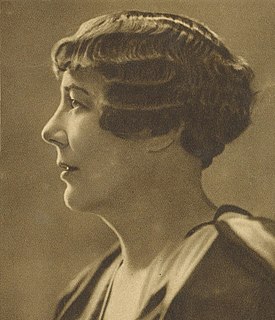 W
WZofia Kossak-Szczucka was a Polish writer and World War II resistance fighter. She co-founded two wartime Polish organizations: Front for the Rebirth of Poland and Żegota, set up to assist Polish Jews to escape the Holocaust. In 1943, she was arrested by the Germans and sent to Auschwitz Concentration Camp, but survived the war.
 W
WWojciech Horacy Kossak was a noted Polish painter and member of the celebrated Kossak family of artists and writers. He was the son of painter Juliusz Kossak, and twin brother of freedom fighter Tadeusz Kossak, and the father of two highly talented literary daughters, Maria Pawlikowska-Jasnorzewska and Magdalena Samozwaniec and of a painter son, Jerzy Kossak.
 W
WHenryk Kuna was a Polish sculptor, active in the early twentieth century. His long career produced many famous works of arts including several renowned public monuments in his native country of Poland.
 W
WTadeusz Kutrzeba was a general of the army during the Second Polish Republic. He served as a major general in the Polish Army in overall command of Army Poznań during the 1939 German Invasion of Poland.
 W
WKonstanty Laszczka was a Polish sculptor, painter, graphic artist, as well as professor and rector of the Jan Matejko Academy of Fine Arts in Kraków. Laszczka became the Rector of the Academy in 1911, however, for family reasons he resigned from this function in 1912.
 W
WLeszek Józef Serafinowicz was a Polish poet, literary and theater critic, diplomat, and co-founder of the Skamander literary movement and the Polish Institute of Arts and Sciences of America.
 W
WFranciszek Mączyński was a Polish Art Nouveau architect. Prominent by 1910, his commissions include several major churches, and turn-of-the-century civic and cultural institutions designed in a Polish-influenced Secession style. In 1936 he was awarded the Golden Laurel of the Polish Academy of Literature.
 W
WKornel Makuszyński was a Polish writer of children's and youth literature. He was an elected member of the prestigious Polish Academy of Literature in the interwar Poland.
 W
WJózef Mehoffer was a Polish painter and decorative artist, one of the leading artists of the Young Poland movement and one of the most revered Polish artists of his time.
 W
WLudwik Hieronim Morstin was a soldier, diplomat, editor and poet.
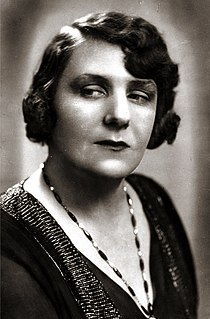 W
WZofia Nałkowska was a Polish prose writer, dramatist, and prolific essayist. She served as the executive member of the prestigious Polish Academy of Literature (1933–1939) during the interwar period.
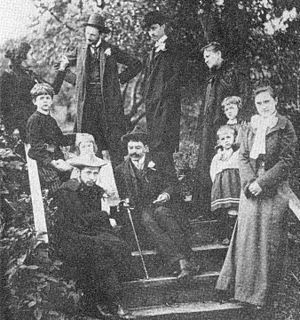 W
WOstap Ortwin was a Polish Jewish journalist and literary critic.
 W
WFerdynand Antoni Ossendowski was a Polish writer, explorer, university professor, and anti-Communist political activist. He is best known for his books about Lenin and the Russian Civil War in which he participated.
 W
WStanisław Ostoja-Chrostowski was a Polish painter, woodcut artist and professor at the Warsaw Academy of Fine Arts. He began studying at the School of Fine Arts in Warsaw. He studied painting with Tadeusz Pruszkowski, woodcut with Władysław Skoczylas and commercial art with Edmund Bartłomiejczyk.
 W
WIgnacy Jan Paderewski was a Polish pianist and composer who became a spokesman for Polish independence. In 1919, he was the new nation's Prime Minister and foreign minister during which he signed the Treaty of Versailles, which ended World War I.
 W
WJan Parandowski was a Polish writer, essayist, and translator. Best known for his works relating to classical antiquity, he was also the president of the Polish PEN Club between 1933 and 1978, with a break during World War II. He was born in Lwów, Austria-Hungary and died in Warsaw.
 W
WMaria Pawlikowska-Jasnorzewska, née Kossak, was a prolific Polish poet known as the Polish Sappho and "queen of lyrical poetry" during Poland's interwar period. She was also a dramatist.
 W
WTadeusz Pruszkowski was a Polish painter and art teacher, known primarily for his portraits.
 W
WMaria Rodziewiczówna was a Polish writer, among the most famous of the interwar years. Her works often addressed patriotism, idealized rural life, and praised the countryside and peasantry. Rodziewiczówna is also noted for advocating for women's rights. Her writings include "Wrzos" ("Heather"), "Dewajtis", "Lato leśnych ludzi", "Straszny dziadunio".
 W
WBruno Schulz was a Polish Jewish writer, fine artist, literary critic and art teacher. He is regarded as one of the great Polish-language prose stylists of the 20th century. In 1938, he was awarded the Polish Academy of Literature's prestigious Golden Laurel award. Several of Schulz's works were lost in the Holocaust, including short stories from the early 1940s and his final, unfinished novel The Messiah. Schulz was shot and killed by a German Nazi, a Gestapo officer, in 1942 while walking back home toward Drohobycz Ghetto with a loaf of bread.
 W
WKazimierz Sichulski was a Polish painter, lithographer and caricaturist; associated with the Young Poland movement. His work was part of the painting event in the art competition at the 1928 Summer Olympics.
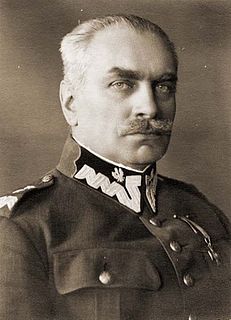 W
WFelicjan Sławoj Składkowski was a Polish physician, general, freemason and politician who served as Minister of Internal Affairs and as the 28th Prime Minister of Poland before and at the Outbreak of World War II.
 W
WArtur Śliwiński is the 8th Prime Minister of Poland from 28 June – 7 July 1922. In 1915 he had presided over the National Central Committee, which sought Polish independence from partitioning powers.
 W
WLudwik Solski, born Ludwik Napoleon Karol Sosnowski, was a Polish stage actor and theatre director. From his stage debut in 1876 until his death he played in nearly a thousand roles.
 W
WGeneral Kazimierz Sosnkowski was a Polish nobleman, independence fighter, diplomat, architect, politician and a Polish Army general. An outstanding commander, an intellectual and an artist; Sosnkowski was a key figure in Poland’s twentieth century history. A lover of art, literature and philosophy, a linguist who knew Latin, Greek, English, French, German, Italian and Russian, Sosnkowski was a man of wide-ranging interests and talents.
 W
WAndrzej Strug, real name Tadeusz Gałecki was a Polish socialist politician, publicist and activist for Poland's independence. He was also a freemason and declined the offer to join the prestigious Polish Academy of Literature, upset by official criticism of the movement.
 W
WAleksander Świętochowski was a Polish writer, educator, and philosopher of the Positivist period that followed the January 1863 Uprising.
 W
WKarol Maciej Szymanowski was a Polish composer and pianist, the most celebrated Polish composer of the early 20th century. He is considered a member of the late 19th-/early 20th-century modernist movement Young Poland and widely viewed as one of the greatest Polish composers.
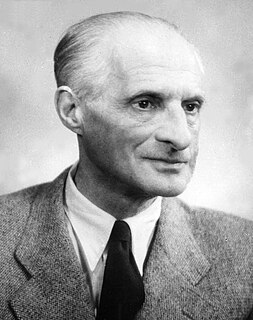 W
WJulian Tuwim, known also under the pseudonym "Oldlen" as a lyricist, was a Polish poet, born in Łódź,. He was educated in Łódź and in Warsaw where he studied law and philosophy at Warsaw University. After Poland's return to independence in 1918, Tuwim co-founded the Skamander group of experimental poets with Antoni Słonimski and Jarosław Iwaszkiewicz. He was a major figure in Polish literature, admired also for his contribution to children's literature. He was a recipient of the prestigious Golden Laurel of the Polish Academy of Literature in 1935.
 W
WKazimierz Wierzyński was a Polish poet and journalist; an elected member of the prestigious Polish Academy of Literature in the Second Polish Republic.
 W
WStanisław Ignacy Witkiewicz, commonly known as Witkacy, was a Polish writer, painter, philosopher, theorist, playwright, novelist, and photographer active before World War I and during the interwar period.
 W
WJózef Wittlin (1896–1976) was a Polish novelist, poet and translator.
 W
WLeon Jan Wyczółkowski was one of the leading painters of the Young Poland movement, as well as the principal representative of Polish Realism in art of the Interbellum. From 1895 to 1911 he served as professor of the Jan Matejko Academy of Fine Arts (ASP) in Kraków, and from 1934, ASP in Warsaw. He was a founding member of the Society of Polish Artists "Sztuka".
 W
WStanisława Wysocka (1877–1941) was a Polish actress and theatre director. Teacher of Państwowy Instytut Sztuki Teatralnej.
 W
WZygmunt Zaleski of Lubicz coat of arms, pseudonymes R. de Bron, R. Debron, was a Polish literature historian, literary critic, poet, publicist, translator. Awarded the Légion d'honneur.
 W
WEmil Zegadłowicz was a Polish poet, prose writer, novelist, playwright, translator, expert of art; co-originator of Polish expressionism, member of expressionists' group Zdrój, co-founder of group Czartak.
 W
WLucjan Żeligowski was a Polish general, politician, military commander and veteran of World War I, the Polish-Soviet War and World War II. He is mostly remembered for his role in Żeligowski's Mutiny and as head of a short-lived Republic of Central Lithuania.